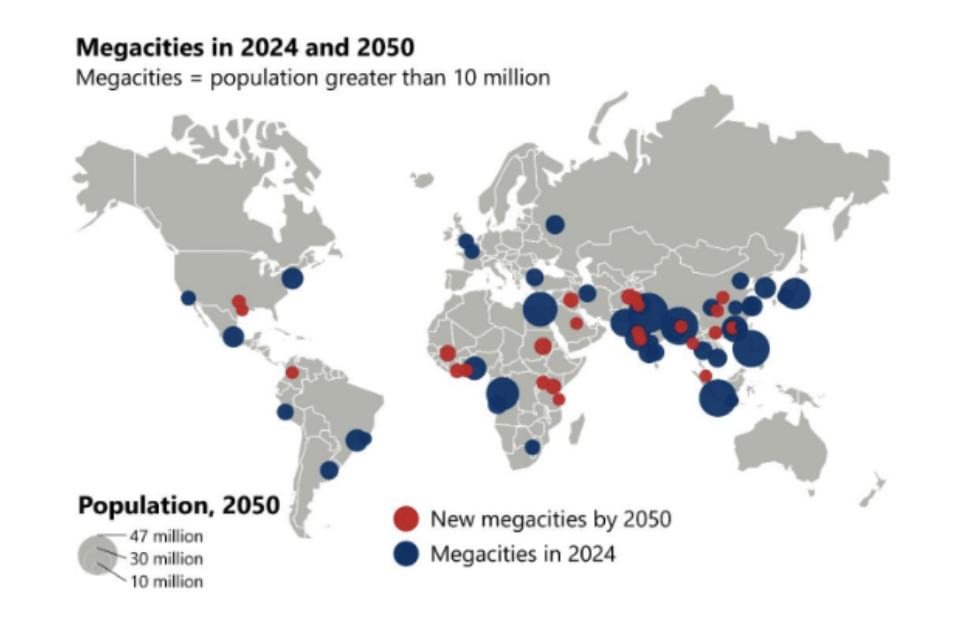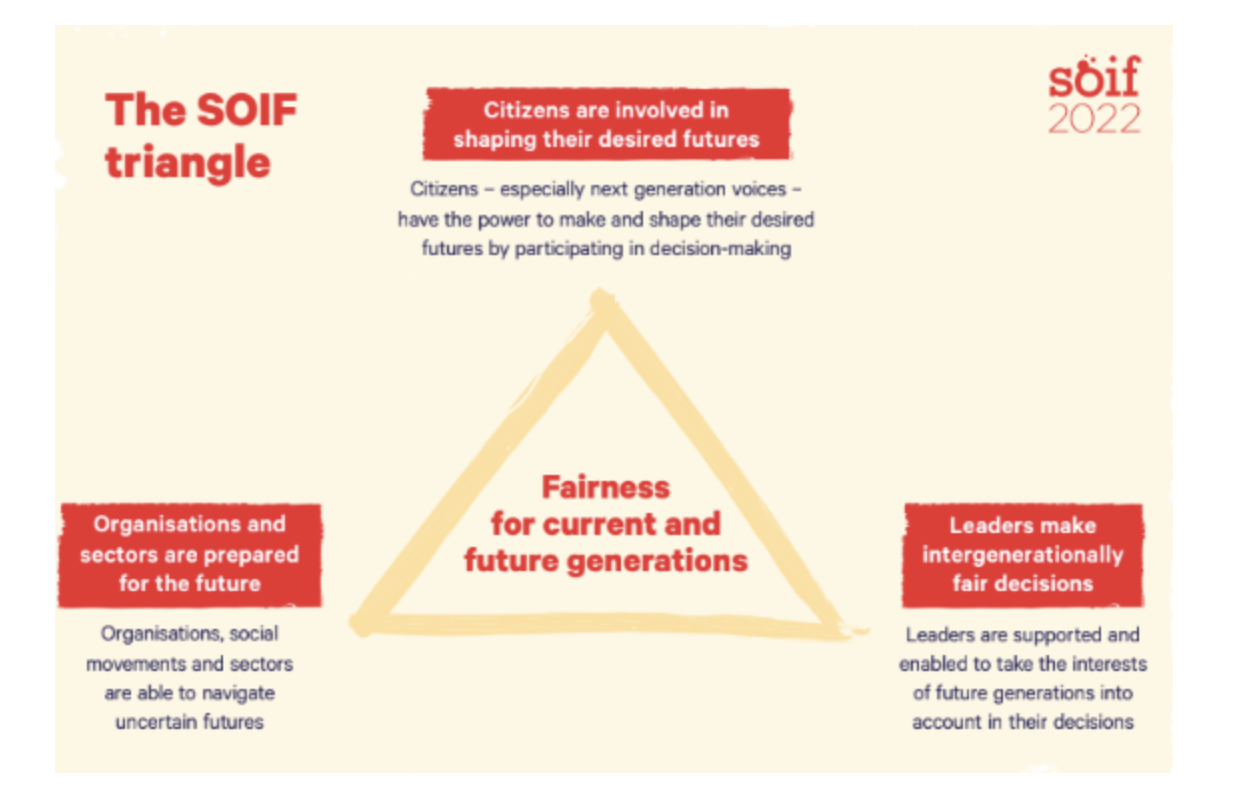Exploring global cities as drivers of intergenerational fairness


· 5 min read
Since the 1987 Brundtland Report, there has been a groundswell for building a world serving the needs of current generations without compromising on the needs of future generations. Even back then, the corrosive effects of environmental degradation and resource overexploitation was recognised, and the long-term risks of such were making headlines. In the foreword of the report, Brundtland himself remarked “In the final analysis, I decided to accept the challenge. The challenge of facing the future, and of safeguarding the interests of coming generations. For it was abundantly clear: We needed a mandate for change.”
Importantly, Brundtland also stated: “We live in an era in the history of nations when there is greater need than ever for co-ordinated political action and responsibility.”
But to date, there has been an emphasis on nation-states as the drivers of multilateral outcomes. This assumption of nation-states being the primary agents of international change has dominated international relations and global public policy for decades, but it leaves out the important role of sub-national actors. Notably, cities play an increasingly important role in achieving intergenerational fairness, across environmental, economic and social domains.
Cities are shaping the future of our planet, with 68% of the global population expected to live in cities by 2050. This shift will add 2.5 billion people to urban areas, with nearly 90% of this growth occurring in Asia and Africa. India, China, and Nigeria alone will contribute 35% of this expansion, placing immense pressure on infrastructure, resources, and long-term environmental sustainability for a large amount of the global population.
In the era of global polycrisis, cities increasingly drive both challenges and opportunities. In light of this, global cities play a crucial role in shaping intergenerational fairness.
Their policies and investments will determine whether future generations inherit sustainable, livable environments and productive, equitable economies. However, as it stands, urban areas are currently responsible for 70% of global CO2 emissions, and generate 7-10 billion tonnes of waste annually, with 3 billion people lacking access to controlled disposal facilities. In lower-income cities, waste volumes are projected to double by 2030, exacerbating public health crises and environmental degradation.
Without urgent action, these issues will continue to accelerate climate change, economic inequality and public health crises, disproportionately affecting younger and future populations.

Despite these challenges, ensuring intergenerational fairness requires urban leaders to implement sustainable policies. This has become very pronounced in the aftermath of the 2024 UN Summit of the Future, and a UN Declaration on Future Declarations.
The 2024 UN Summit of the Future serves as a pivotal moment in shaping a comprehensive normative framework for promoting intergenerational fairness and sustainable development. Central to this effort is the Pact for the Future (Resolution A/RES/79/1), which establishes governance principles that prioritize the well-being of future generations. The Declaration on Future Generations, adopted at the Summit, reinforces this commitment by outlining key actions to integrate long-term thinking into policymaking.
The Summit of the Future provided a cohesive, forward-looking framework to ensure that present actions safeguard the rights and opportunities of future generations while fostering global sustainability.
Complementing the existing efforts of many global cities, the Declaration emphasized the important role of sustainable resource management, climate resilience and science-based environmental policies to protect the planet for future generations.
The declaration acknowledges “the primary role and responsibility of governments, at all levels, in line with their respective constitutional frameworks, towards safeguarding the needs and interests of future generations.”
The key emphasis was on “all levels” of government. However, there is a surprising lack of consideration towards cities in the Declaration.
This is despite what has been stated earlier - that cities are key drivers of global challenges, but also solutions to these challenges.
So how can cities become more recognised and proactive agents in achieving international intergenerational fairness?
In response to this question, myself and others have had the pleasure of establishing the School of International Futures (SOIF) Intergenerational Fairness in Cities (IGF Cities) Community of Practice.
This community comprises Melbourne, Christchurch, Cape Town, Recfie and New York City - thus encompassing cities from the Global North and South, but also large cities and small cities. It provides a platform for cities to collaborate on issues of intergenerational fairness, in both a global manner, but also a very localised manner. In this sense, it is a truly ‘glocal’ community.
Specifically, the community uses frameworks such as the SOIF Intergenerational Fairness Policy Assessment Toolkit. The toolkit defines intergenerational fairness as policies that:
1. Allow people of all ages to meet their needs, and;
2. Meet the needs of the present without compromising the ability of future generations to meet their own needs
The toolkit offers a way to critically think about the institutionalisation of intergenerational fairness and long-term, anticipatory governance in policy making circles. This is via a policy assessment toolkit and national dialogue.
Other frameworks include the SOIF Foresight Prism (formerly called the SOIF Triangle).
The prism shows us that intergenerational fairness is a matter of combining the efforts of:
• Citizens - particularly from younger generations and the global majority
• Organisations - across public, private and civil society sectors
• Leaders - across all sectors, showing a long-termist perspective that overcome short-term bias

The Community of Practice hopes to create opportunities for these cities to assess how they are supporting citizens, organisations and leaders to achieve long-term environmental sustainability, social equity and economic prosperity, underpinned by sound city governance - top-down and bottom-up. This is a catalyst for cities driving intergenerational fairness in cities.
Importantly, member cities can learn from each other's challenges, experiences and successes, and hence support the maturation of long-term policymaking culture in member cities.
As there are only 5 years before the UN SDGs expire, it is imperative we do what we can, however we can, to drive intergenerational fairness. This is particularly in light of the Volatile, Uncertain, Complex and Ambiguous (VUCA) world we live in.
illuminem Voices is a democratic space presenting the thoughts and opinions of leading Sustainability & Energy writers, their opinions do not necessarily represent those of illuminem.
illuminem briefings

Public Governance · Social Responsibility
illuminem briefings

Sport · Social Responsibility
illuminem briefings

Public Governance · Social Responsibility
Jurist

Sport · Human Rights
The Washington Post

Human Rights · Religious Rights
The Guardian

Human Rights · Public Governance